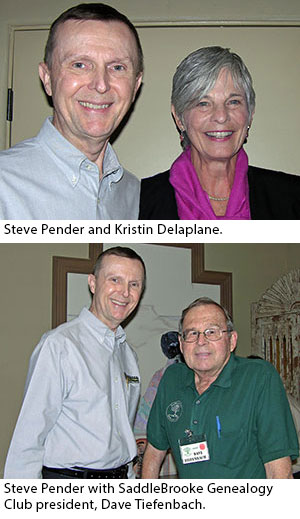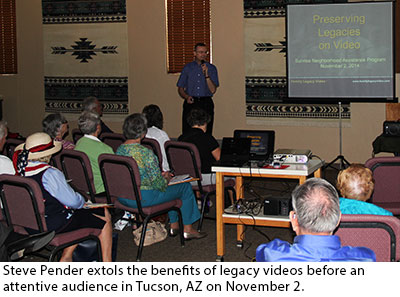It seems like the learning curve never ends – it just changes shape. When I’m tackling something new and the curve is at its steepest, I feel like I’m trying to ski up a hill. After getting a little experience under my belt, the curve flattens and requires a little less effort on my part, kind of like skiing cross-country. Then, when I’ve really mastered something, I’m on the downhill slope, zipping along and enjoying the ride, keeping watch for the occasional mogul. Having booked my first commissioned video biography, I found myself staring up at an uphill slope, getting ready to climb once again.
To be sure, the curve wasn’t as steep as it could have been. In 2003 I already had 24 years of experience as a writer, producer/director, and video editor. But could the skills I’d honed working on a wide variety of corporate, business, and not-for-profit video projects be brought successfully and profitably to bear on a personal history project? What would work and what wouldn’t? What price could I set that wouldn’t scare away Dick and Mary-Lou, my prospective clients, but that would be realistic, allowing me to produce a legacy video of value to my client while fairly compensating me for my time and expenses?
It looked like I was going to find out.
I opened up my production spreadsheet and spent some time estimating hours and expenses. I came up with what I thought was a fair budget. It was, perhaps, a little on the low side, but I was looking at this as a learning experience, as well an opportunity to create a template for future video biographies and to start building a portfolio. I figured I could adjust future budget estimates based on the experience I gleaned from this project. Luckily, Dick and Mary-Lou agreed to my price, and we were off and running.
As far as process was concerned, I decided not to try and reinvent the wheel, but to follow the steps that served me well when I created videos for corporate clients. First order of business (after signing a contract, of course): the preinterview. I sat down with Mary-Lou and Dick at their home for a couple of conversations, during which I learned the stories they wanted to tell. I used my notes from these sessions to draft the questions I’d ask on-camera, and to give my new clients some guidance about the kinds of photos and other visuals they could provide that would help enhance their recollections. We then scheduled their video shoot and I booked my crew.
Bright and early on a sunny September morning, I excitedly rang the bell at Dick and Mary-Lou’s ranch-style home in the Winterhaven section of Tucson. The door opened, and Dick ushered me and my cameraman inside. My first professional video biography interviews were about to begin. How did things go? I’ll tell you in another post.
Oh, and by the way: What’s your story?

